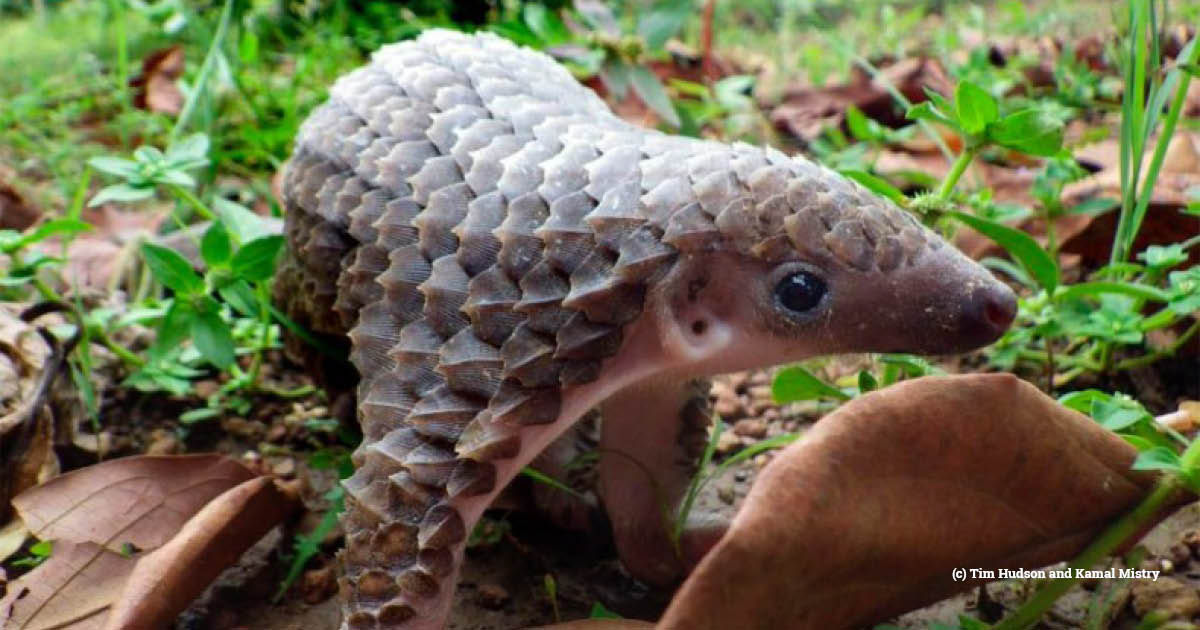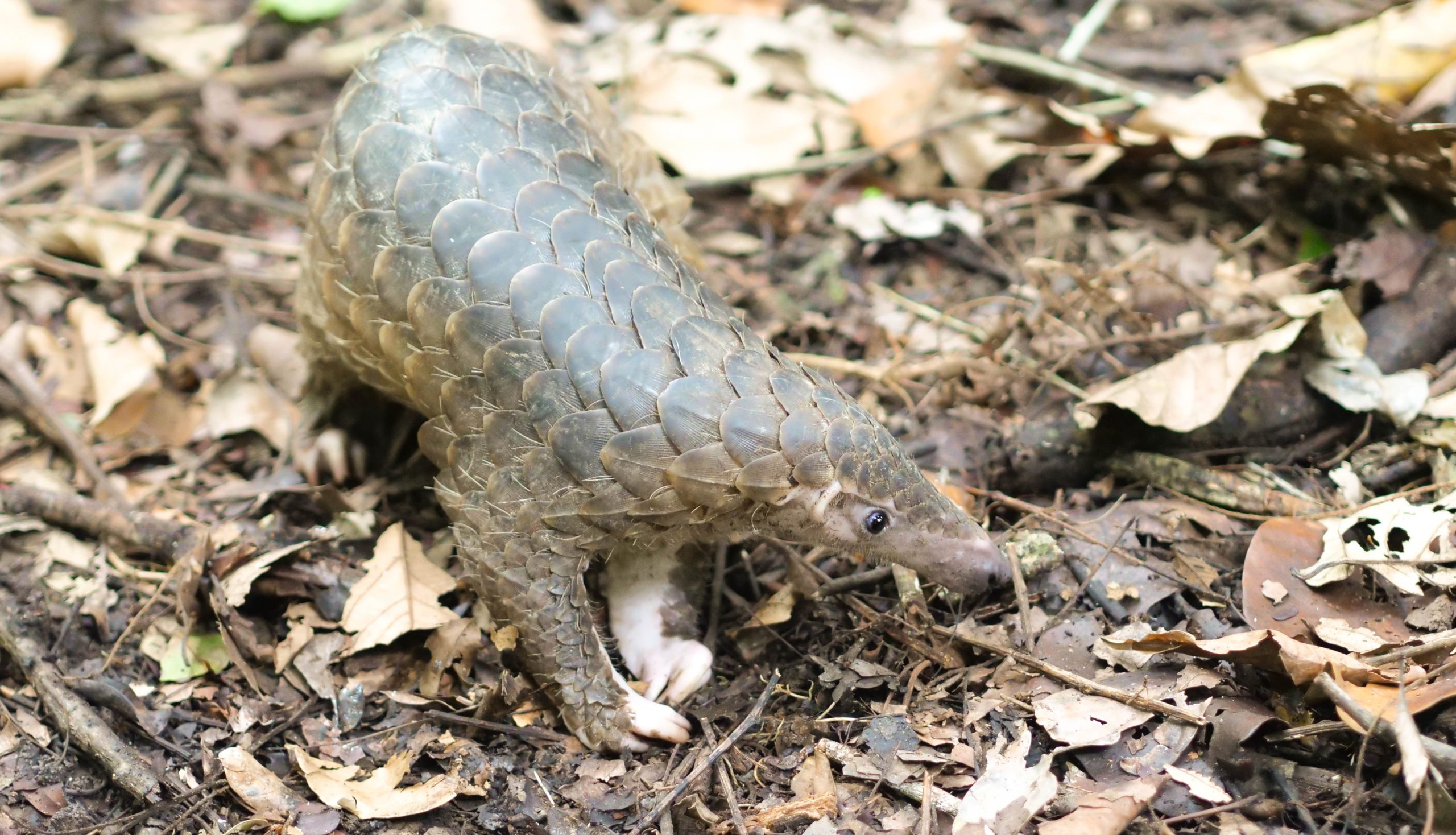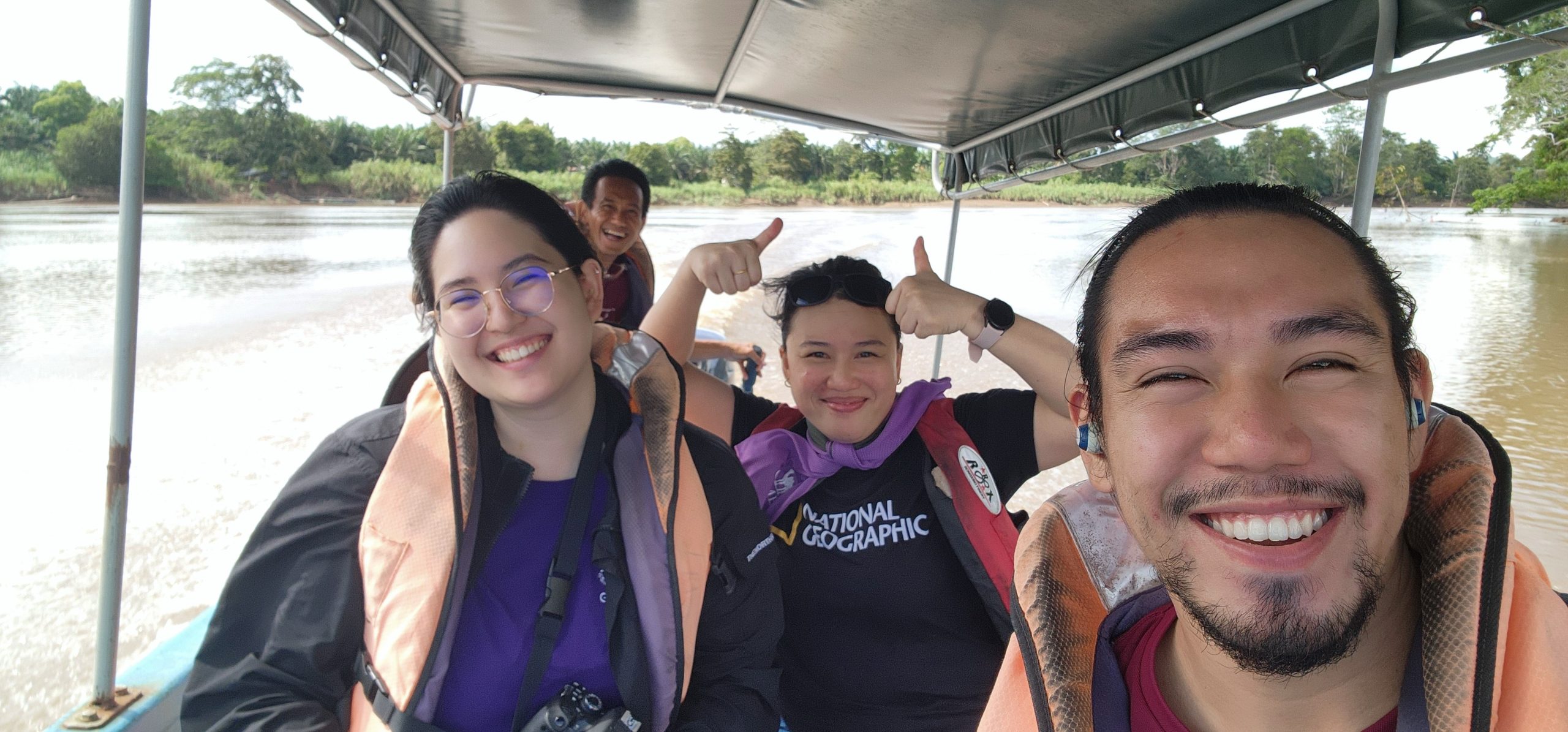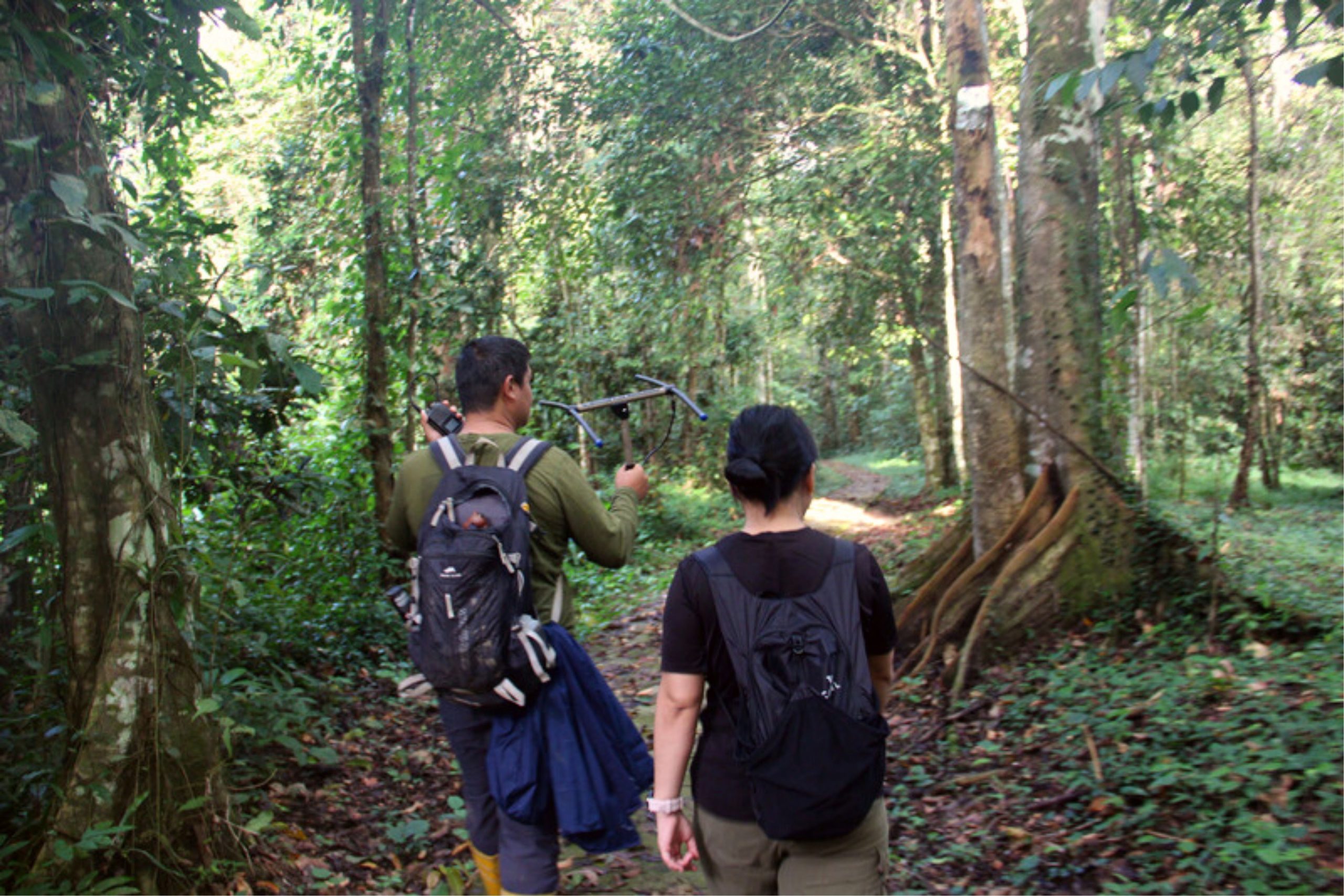World Pangolin Day 2024 – on the trail of the elusive, critically endangered Sunda pangolin



On the eve of World Pangolin Day 2024 (17 February), EIA campaigner Erin Chong ventures into a remote forest in Malaysia in pursuit of the elusive Sunda pangolin.
Sabah, one of the 13 states of Malaysia, makes up part of the biodiversity-rich island of Borneo, known the world over for its lush rainforests, beautiful coastlines and formidable mountains. Hundreds of species of mammals, birds, reptiles, insects, plants and marine life call Sabah their one and only home.
Perhaps less well known is that Sabah is also the refuge of the Sunda pangolin, a shy creature that spends its days sleeping in tree hollows or burrows in the ground.
Classified as ‘Critically Endangered’ on the IUCN Red List, it is one of the eight species of pangolins currently listed under Appendix I of the Convention on International Trade in Endangered Species of Wild Fauna and Flora (CITES), a level of protection which prohibits trade in their parts and derivatives.
But despite the sanctuary which the rainforests and rivers of Sabah provide for the Sunda pangolin, they still sadly fall victim to poaching and trafficking.

A Sunda pangolin among the forest litter (c) Bob Hartley
In February 2019, a record-breaking 29.8 tonnes of pangolins were uncovered in a warehouse in Kota Kinabalu by the Police and Sabah Wildlife Department, the largest publicly recorded seizure of pangolin parts in Malaysia to date. The thousands of frozen pangolin carcasses, 61 live pangolins and 361kg of scales were suspected to have been illegally sourced by local hunters for consumption in Sabah and Sarawak.
Just two years earlier in July 2017, eight tonnes of pangolin scales were seized at Sepanggar Port en route to China. This shipment was most likely destined for the traditional Chinese medicine market; our recent report Investing in Extinction found 48 products available for sale online which listed pangolin as an ingredient in their formula.
Despite being totally protected under Sabah’s state law, pangolins continue to be threatened by the demand for their meat and scales; largely driven by Sabahans, Sarawakians and visiting Chinese tourists. The scaly creatures often wander from the safety of their forests into oil palm plantations where they have unfortunate encounters with opportunistic poachers.
This January, I had the privilege of experiencing conservation efforts at first hand at the Danau Girang Field Centre (DGFC) situated in the Lower Kinabatangan Wildlife Sanctuary of eastern Sabah. I hopped on a plane from my hometown near Kuala Lumpur, flew over the South China Sea to Sandakan and, a two-hour van ride later, arrived at the jetty where a speedboat awaited. Travelling by boat along the Kinabatangan, the second-longest river in Malaysia, we meandered past crocodiles, hornbills, proboscis monkeys, silver langurs, herons and birds of prey.

Smiles all around, speeding into the interior (c) Elisa Panjang
I linked up with Elisa Panjang, Sabah’s homegrown pangolin scientist, who was thrilled to be back to DGFC after two years. A passionate advocate for pangolins and one of Malaysia’s leading researchers of the species, she had served as DGFC’s pangolin conservation officer alongside studying their ecology and behaviour for her PhD. After leaving DGFC, she achieved her dream of setting up her own non-governmental organisation, aptly named Pangolin Aware. A one-woman show with the support of volunteers, her work spans education, awareness and pangolin rescue, with plans to expand into ethnozoological surveys to study local traditions and practices which use protected wildlife.
Elisa’s work on pangolins at DGFC has been inherited by University of Hong Kong researcher JiaZhen Lim, aka Jerry, a Malaysian who makes it his daily mission to track several radio-tagged pangolins within the wildlife sanctuary. He studies the viral diversity of wild pangolins and other sympatric wildlife to uncover more about risks of coronavirus in the wake of the COVID-19 pandemic.
Armed with a speedboat, radio tracking equipment and rubber boots, we set out to find the shy creatures. Guided by Jerry holding out the Yagi antenna with one hand and using the other to keep the radio close to his ear, we followed the plop sound as it got louder. Our journey took us down the river, saw us stuck in mud and brought us back into the forest. We successfully tracked two pangolins to their tree hollows, where they were nowhere to be seen, presumably sound asleep.

Jerry and Elisa leading the search (c) Erin Chong
Even for Jerry, encountering pangolins out of their sleeping sites during the day is a rare treat. While I had hoped we might be lucky, I knew the odds were not favourable and, sure enough, the pangolins eluded us this day. Our trek was cut short by a torrential downpour – the remnants of the monsoon season – and we plodded back to the shelter of the research centre.
Warm and dry back in the centre’s dining room, Jerry showed us camera trap footage of the pangolins frolicking by their sleeping sites. Under the cover of night, the hollows and burrows came alive with bats, moonrats, Malay badgers and yellow-throated martens to name just few. Sharing the same habitat, they all live and interact together, much like a natural multi-storey apartment where you play a mystery roulette of surprise roommates every day and night.
In the local language, ‘danau girang’ translates to ‘happy lake’. The happiness must stem from the rich ecosystem which it supports and the resilient pangolins that call it home. It is our hope that the happiness stays – along with the pangolins of Sabah for many, many generations to come.